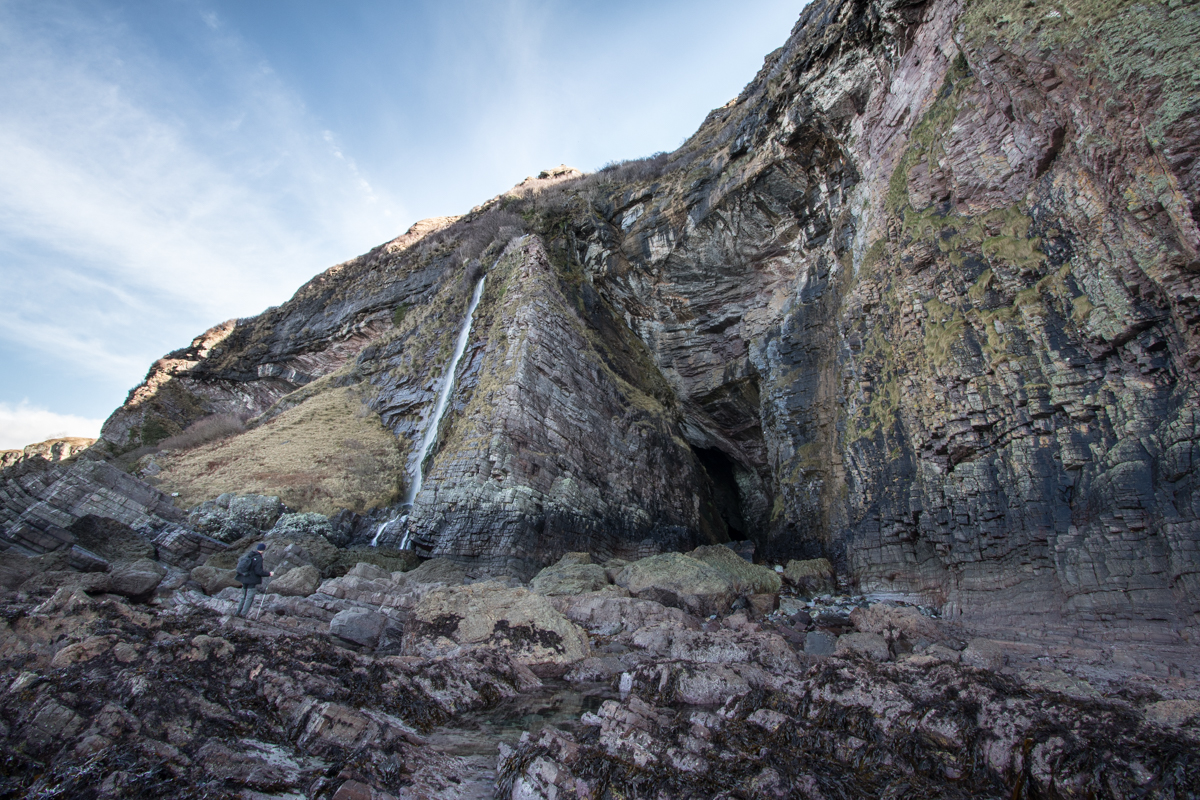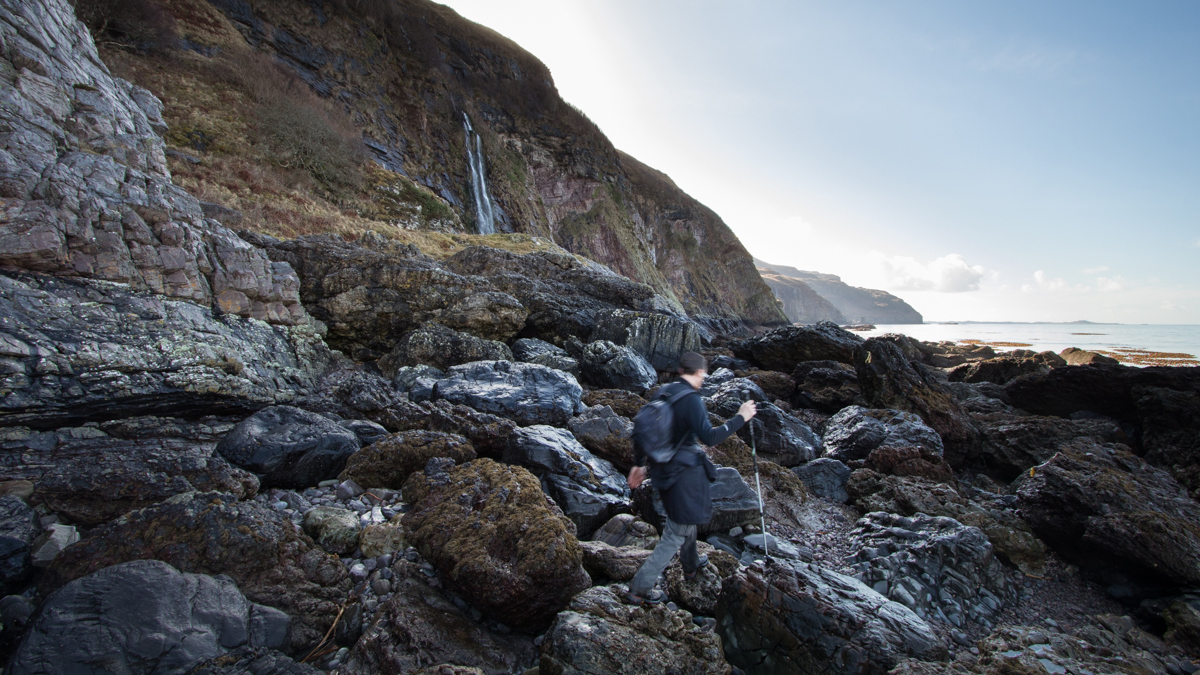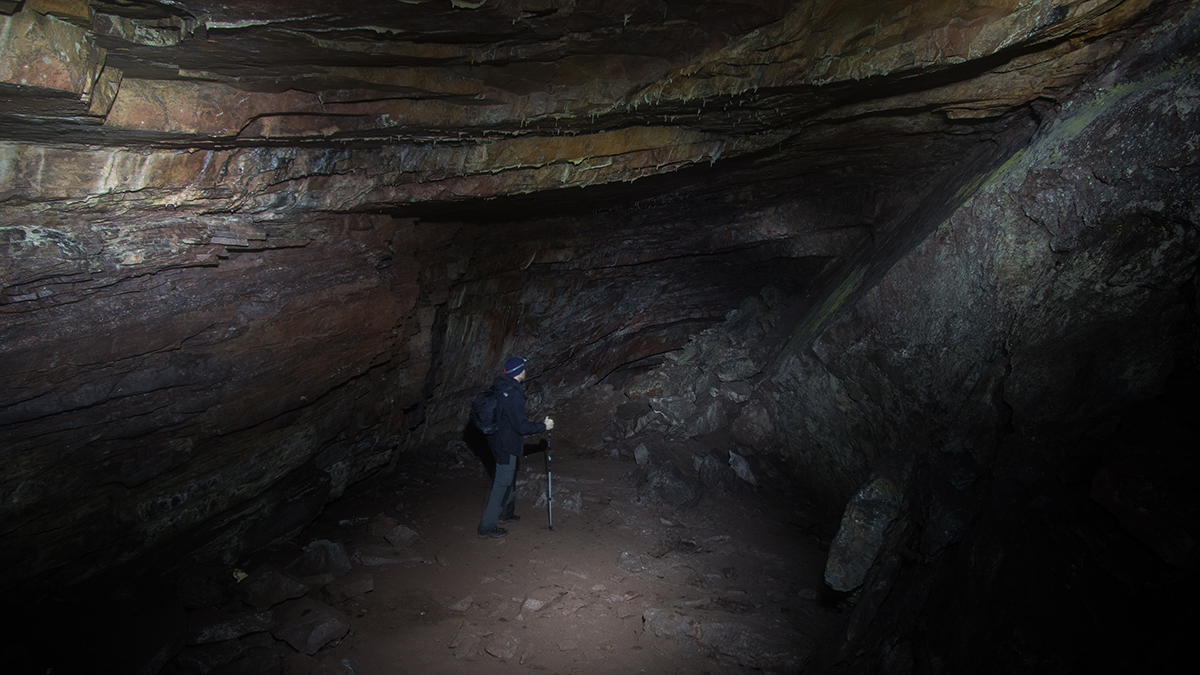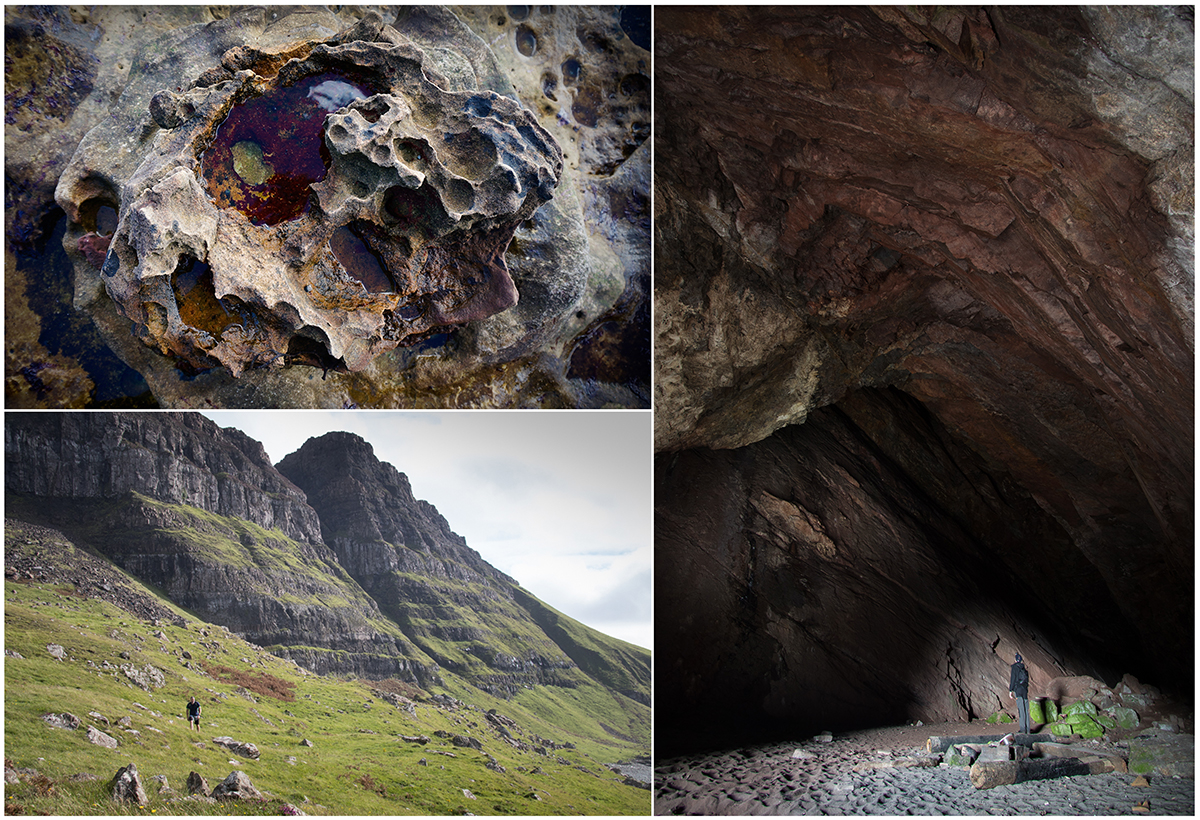A Guide To Visiting MacKinnon’s Cave on Mull
MacKinnon’s Cave is situated on the Isle of Mull’s west coast near Gribun. The area is dominated by sheer cliffs and very broken country that affords a great view of several important geological time periods. MacKinnon’s Cave is also said to be the longest sea cave in the Hebrides, at around 500 feet in length. A torch is therefore essential to explore the cave, and as the mouth of the cave is tidal you must consult the tide times before setting off and plan your visit on a low tide.

Walking from the parking area at Balmeanach Farm, you follow the fence line before reaching the coast. Here, you get stunning views west along Ardmeanach.

On the shore and in the vicinity of MacKinnon’s Cave, the main rock type is called psammite and it belongs to the “Moine Supergroup”, which are around 1000 million years old. This rock is mainly comprised of sandstones that have been subjected to heat and pressure, which causes the rock to change “metamorphose” into a much harder, crystalline rock, the psammite. The rocks dip at an angle of about 40 degrees, making it difficult to walk. Great care should be taken while scrambling toward the entrance to the cave. The psammites continue all the way round the coast and provide the bedrock for some of the most rugged coastal scenery that Scotland has to offer, a wild landscape of sea stacks, caves, fissures and natural arches.
MacKinnon’s Cave consists of a large main chamber with a sand filled floor. Some light enters this part of the cave and plants thrive near the entrance. A narrower tunnel leads deeper into the dark of the cave before arriving at a second chamber, where rockfall blocks the way. Deep caves usually have a good geological reason for their formation and Mackinnon’s Cave is no exception, having been eroded out along the line of a fault by the relentless pounding of the waves.

Above the psammites, there are rocks that are much younger, although still very old. These are sediments of Triassic age (200 to 250 million years old). The shore around MacKinnon’s Cave is strewn with large boulders that have fallen from the cliffs above of these Triassic conglomerates, which resemble mixed concrete. Most of the lumps, technically called “clasts” in the conglomerate are of the Moine psammites from which they were derived. Heading further west along Ardmeanach, the way is largely pathless, skirting between the cliffs both above you and below to the coast. The views over the sea to Iona, Staffa and Treshnish Isles are mesmerising!

Above the Triassic conglomerates can be found on the obvious “terrace” of cliffs. These were formed by great flows of lava dating to the Palaeogene period ca. 60 million years ago. At this point, the Isle of Mull was volcanically very active and great flows of lava poured over the landscape.

In this part of Mull, the stepped terracing in the lavas is very clear. Each layer is a distinct, separate lava flow, a topography known as “trap”. The westernmost area of Ardmeanach is known as ‘The Wilderness’ and it certainly feels like an apt name as you venture below the towering crags. The fossil tree is close by too, but most of people will walk to it from Burg – another adventure we will cover at some point!
Feeling inspired? Get your itinerary planned and book your perfect holiday cottage on Mull to see MacKinnon’s Cave for yourself!
